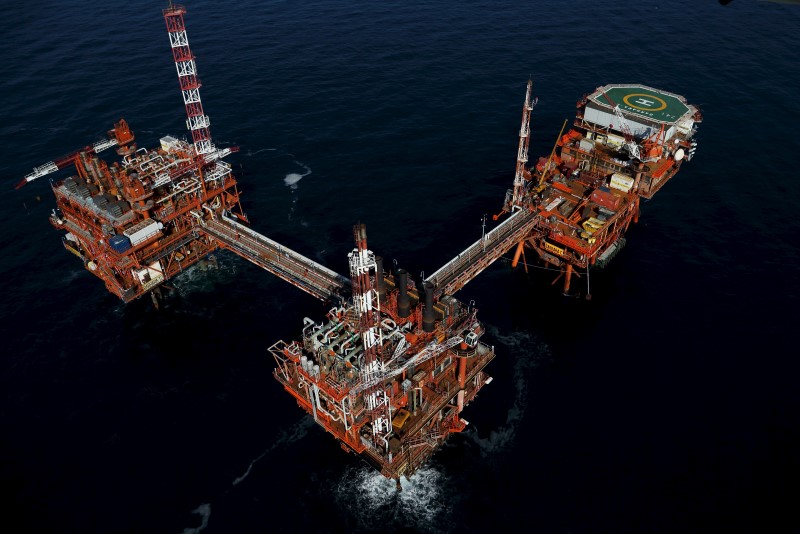(Corrects to show prices highest since November, not October
2015, paragraph 1)
* Major oil exporters Nigeria, Venezuela in crisis
* U.S., China output also down sharply
* Goldman Sachs (NYSE:GS) says market flipping into deficit
* Inventories still very high - Morgan Stanley (NYSE:MS)
By Henning Gloystein and Dmitry Zhdannikov
SINGAPORE/LONDON, May 16 (Reuters) - Oil prices jumped over
2 percent on Monday to their highest since November 2015 on
growing Nigerian oil output disruptions and after long-time bear
Goldman Sachs said the market had ended almost two years of
oversupply and flipped to a deficit.
Brent crude futures LCOc1 were trading at $48.71 per
barrel at 0836 GMT, up 88 cents, or 1.8 percent, having risen
earlier by as much as 2 percent.
U.S. crude futures CLc1 were up 85 cents, or 1.8 percent,
at $47.06 a barrel.
Supply disruptions around the world of as much as 3.75
million barrels per day (bpd) have wiped out a glut that pulled
down oil prices by as much as 70 percent between 2014 and early
2016.
The disruptions triggered a U-turn in the outlook of Goldman
Sachs, which had long warned of global storage hitting capacity
and of yet another oil price crash to as low as $20 per barrel.
"The oil market has gone from nearing storage saturation to
being in deficit much earlier than we expected," Goldman said.
"The market likely shifted into deficit in May ... driven by
both sustained strong demand as well as sharply declining
production," it said.
However, Goldman cautioned that the market would flip back
into a surplus in the first half of 2017 as it said prices
around $50 per barrel in the second half of 2016 would see
exploration and production activity picking up.
In Nigeria, output has fallen to its lowest in decades at
around 1.65 million bpd following several acts of sabotage.
In the Americas, U.S. officials warned they were growing
increasingly concerned by the possibility of an economic and
political meltdown in Venezuela amid low oil prices.
Venezuela's oil production has already fallen by at least
188,000 bpd this year.
In the United States, crude production C-OUT-T-EIA has
fallen to 8.8 million bpd, 8.4 percent below 2015 peaks as the
sector suffers a wave of bankruptcies.
And in China, output fell 5.6 percent to 4.04 million bpd in
April, year-on-year.
Countering this, supply rose from the Organization of the
Petroleum Exporting Countries (OPEC) as its producers are
engaged in a race for market share.
OPEC pumped 32.44 million bpd in April, up 188,000 bpd from
March, the highest since at least 2008.
Also preventing steeper price jumps was a recovery in output
in Canada following closures due to a wildfire, as well as
bloated global crude storages.
"The inventory buffer may be preventing full price recovery
and ... the market is rightly nervous about the sustainability
of outages," said Morgan Stanley.
Barclays (LON:BARC) said that "while the supply-side disruptions are
supporting oil market balances, refinery margins are starting to
weaken, especially in Asia," adding that weaker demand from
those refiners could produce "downside risk to prices in Q3 16."
